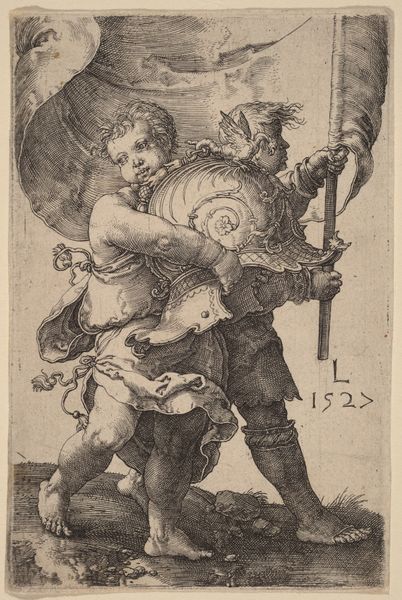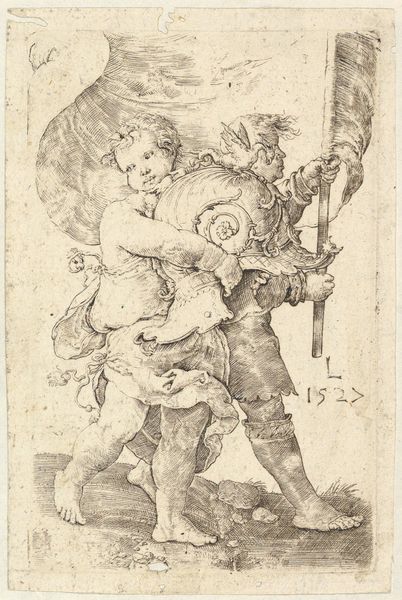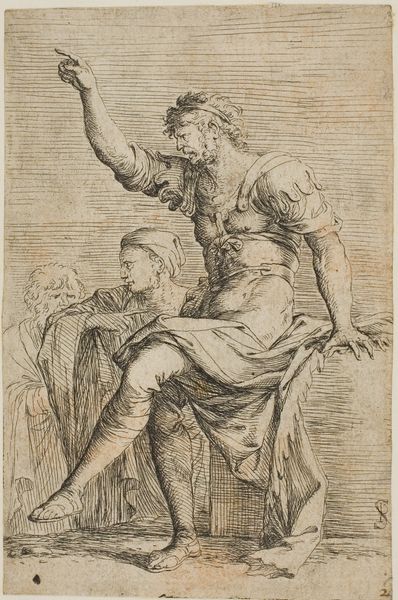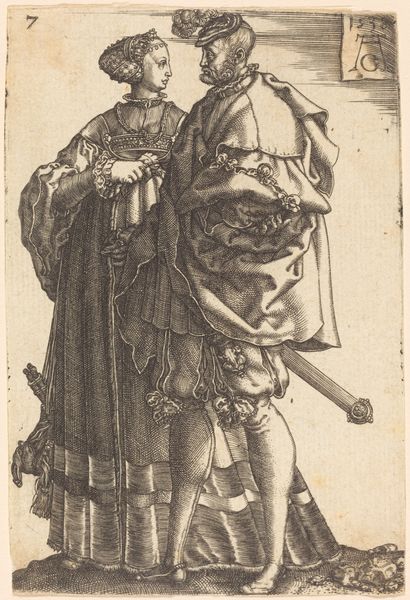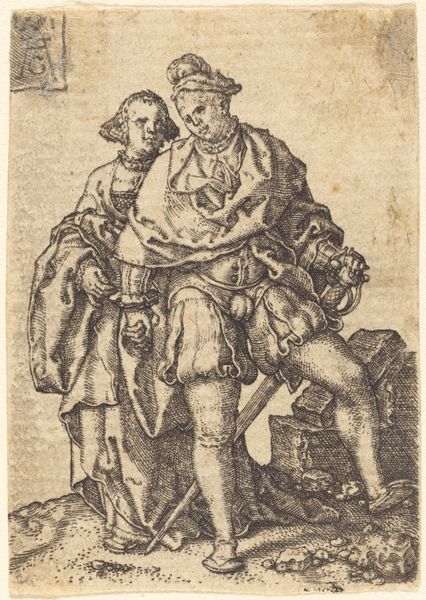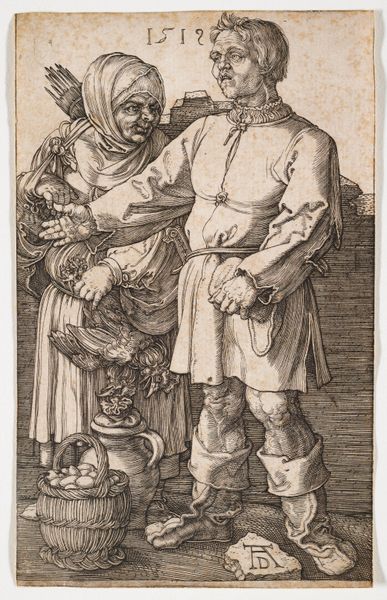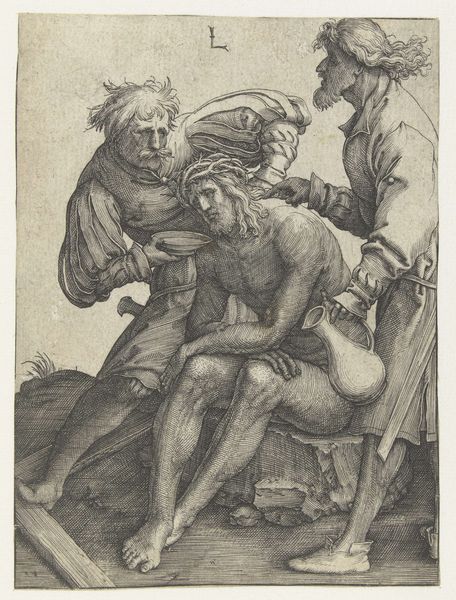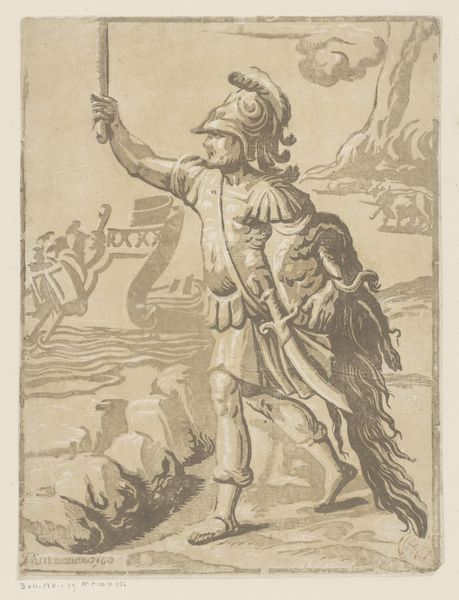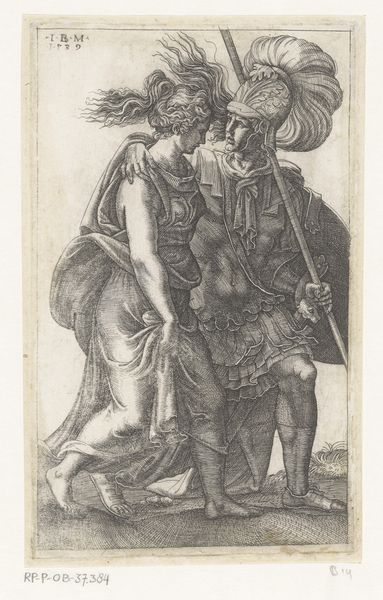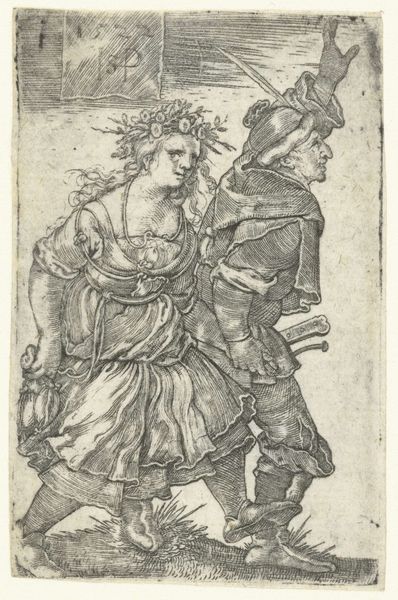
Dimensions: Sheet: 4 5/8 × 2 15/16 in. (11.8 × 7.5 cm)
Copyright: Public Domain
In 1514, Albrecht Dürer created this engraving, depicting a peasant couple dancing. It is a window into the social dynamics of 16th-century Germany, revealing the complex relationship between the rising merchant class of artists like Dürer and the rural peasantry. Dürer was interested in the lives of ordinary people, but his image also participates in a long-standing tradition of depicting peasants as figures of fun or ridicule. Note the woman's ungainly features and the man's wild gesture, which could be interpreted as mockery. This aligns with a broader cultural narrative where the upper classes sought to define themselves against the perceived excesses and vulgarity of the lower classes. Art history gives us a context for understanding the dynamics between social classes in the 16th century. By studying the imagery and the cultural context in which Dürer was working, we can begin to understand the complex social conditions that shape artistic production.
Comments
No comments
Be the first to comment and join the conversation on the ultimate creative platform.
